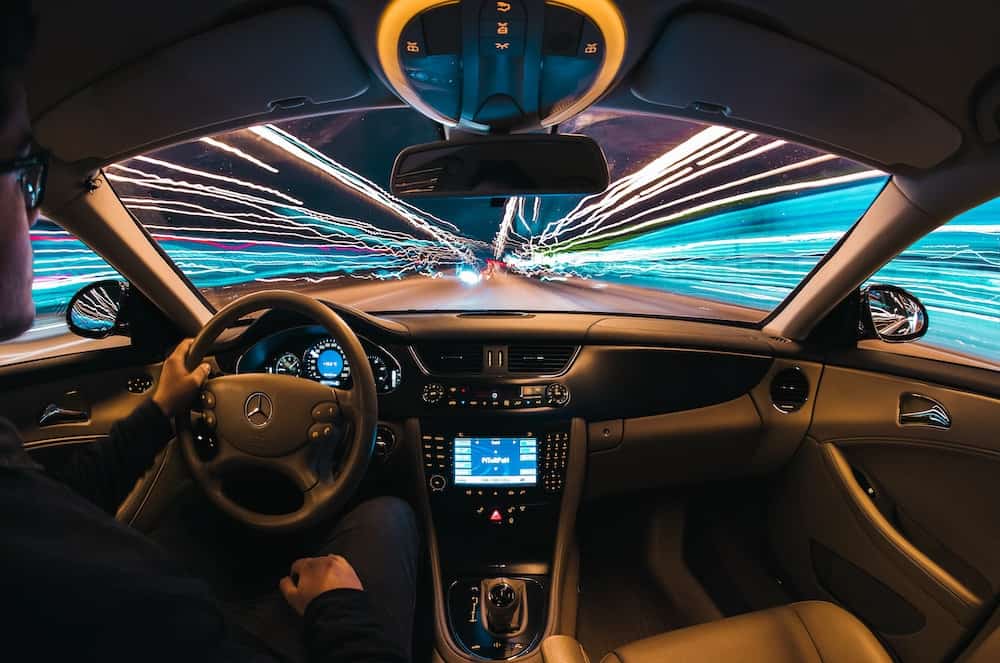There are many reasons to go through the trouble of learning driving. Whatever your reasons, leaning driving is a good investment for your life.
We have gathered a complete step by step lists for learning driving. Read on:
Step 1. How old are you?
First things first. Are you old enough to drive a car? In many countries, you are only allowed to legally drive a car by the age of 18. That’s why most people start learning to drive at 17. Our suggestion if you are not 17 yet is to wait a bit more and avoid unnecessary legal troubles.
Step 2. Take an eyesight test
In order to learn to drive, you should have a good vision. Passing a standard eyesight test is something expected by most transit departments. You may recognize the test by its peculiar chart:
The Snellen Chart, in any of its variations, basically establishes if you need wearing eyeglasses. In case you do, your driver license will reflect it. If you are not sure about your vision level then you can take an eyesight test online. There are many free sites where you can perform this simple test, it would take less than 5 minutes.
Step 3. Check other health conditions that may affect your driving
Contrary to what people may think, an eyesight problem is not the only health condition affecting your driving. Depending on your country you may need to inform the transit department of other health conditions like Alzheimer’s disease, arrhythmia, brain angioma, blackouts, cataracts, convulsions, deafness, diplopia, epilepsy, fainting, glaucomas, heart failure, high blood pressure, optic atrophy, paranoia, psychosis, tachycardia, tunnel vision, and many others. Our suggestion is contacting your local transit department and ask for a list of health conditions that should be informed. Not informing these conditions could lead to serious consequences like fines and the cancellation of the driver’s license.
Step 4. Apply for a provisional license
In some countries, you have the option to apply for a provisional license. That’s a great incentive to learn to drive for many teenagers over 15 years old. However, please keep in mind the following limitations:
- You still are required to pass the same eyesight test.
- You still need to notify about any health condition that may affect your driving.
- You will still need passing the theoric and driving test.
- Provisional licenses are mostly for mopeds nor for cars or motorcycles. Check your local laws for detailed information.
On the bright side, once you get your provisional license you won’t need to reapply to drive a car.
Step 5. Study the rules first, drive later
Learn to drive is not only about your driving skills but also about knowing the related theory and traffic conventions. Before taking the wheel is a good idea to study everything related to the obligatory theory test. The main topics you should be learning are:
- Traffic signs
- Traffic rules (local laws)
- Essential driving skills
In most countries, you can buy related bibliography or take practice tests online. Depending on the are you live on you may need to take additional tests like the UK “Hazard perception test”. For the young motorist having to study all this theory may seem like a daunting task, but in the end, if you want to learn to drive you will have to. Besides the theory test, there is a good reason for understanding the theory. Driving has its own language, it’s called conventions. Knowing these conventions is part of the necessary driving skills you will need to ride safely.
Step 6. Behind the wheel
If you are following our suggestions you should have by now basic knowledge about driving conventions, traffic sign, and local laws. It’s the time of the long-awaited challenge: driving. In order to drive legally while you learn to drive, you must have a provisional driving license (see step 4). Depending on your country some of the following limitations may apply:
- The car should have special plates showing you are a student learning to drive.
- You must be supervised by an adult while you learn to drive. This can be a driving instructor or a family or friend that meet the rules.
- You must comply with certain speed limits while learning to drive. Check your local laws for more information.
There are no written rules about how many lessons are needed to learn to drive. This is something important to know because not everyone takes this challenge with the same level of excitement. It’s not unusual to be afraid, this is normal. Like any other ability, you will need practice before mastering driving skills. Our advice is taking your time, learn at your own pace, and try having fun during the process.
Step 7. Book and manage the theory test
Finally time for testing your knowledge. Like any other test, it’s advised to be calm and focused. The objective of this test is measuring your comprehension about the “driving conventions” we talked already, as well as the basic rules regarding driving safety and best practices. In other words, the goal of this exam is probing that you have the necessary knowledge for driving with responsibility.
In some countries, you will need to bring a special photo that will be included in your final driving license. Besides the theory test fee, this photo is often the only thing you need to take with you. Be aware that in most cases you won’t be able to bring personal belongings with you during the test. Bags, earphones, phones, watches, and books, will need to be stored in a locker before entering the test room. As you may guess, cheating is totally forbidden during the test and its even illegal in many countries.
Step 8. Book and manage the driving test
Once you have passed the theory test then you can book your driving test. Please keep in mind that besides the test fee you may be asked to provide the following:
- Driver’s license number
- Theory test pass certificate
- A car that meets the applicable rules (check your local laws).
Like the theory test, it’s normal to be anxious about this exam. Just remember that the only objective of this test is certifying your driving skills. The content of the test can vary from one country to another, however, basically consist of the following points:
- Eyesight check. Don’t worry, isn’t a Snellen Chart test. But as part of the standard procedure, the instructor may ask you to read some license plates or some traffic signs from the distance.
- Basic safety questions. Similar to the theory test, the instructor may ask you about basic safety rules.
- Driving test. The driving test will focus on showing the instructor that you are capable of independently drive a car, including reverse driving, parking, and general driving on different traffic conditions.
What To Do Next?
Congratulations. Once you passed both the theory test and the driving test you can legally drive the car. Check your local laws to know about what other requirements you may need. Usually, you may be asked for:
- Register the vehicle with the local transit authority.
- Car’s insurance.
- Car related taxes applicable in your city.



